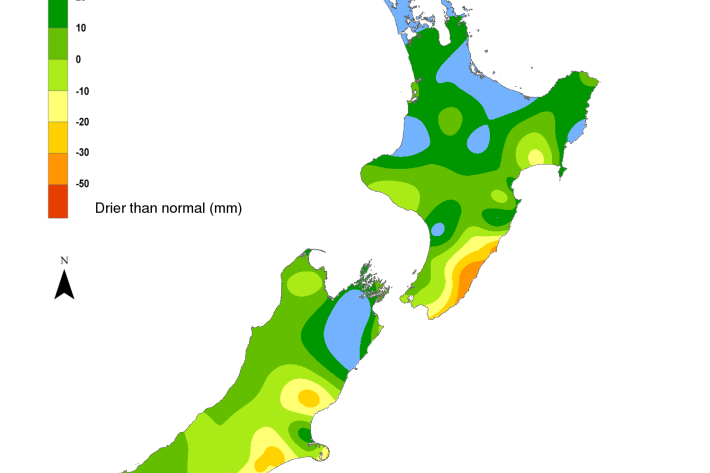-

Tropical Cyclone Outlook: November 2021-April 2022
The NIWA and MetService assessment of named tropical cyclone (TC) activity indicates 9 to 12 named TCs could occur in the Southwest Pacific basin between November 2021 and April 2022. The seasonal outlook is for normal to slightly above normal activity in terms of overall named TCs in the region. -

Bottom lining for the control of submerged lake weeds
Bottom lining is the installation of a flexible covering over the top of beds of aquatic weeds, similar to using weed matting in home gardens. This control method is also called ‘benthic barriers’. -

Climate Data for the Environment Services Client (CliDEsc)
Research ProjectCliDEsc is a web-based content management system and product generator library developed by NIWA in consultation with National Meteorological and Hydrological Services in the Pacific region, and with the Australian Bureau of Meteorology. -

Freshwater bioremediation using native mussels - focussed on shallow eutrophic lakes
Research ProjectThe project aim was to harness the filter-feeding capacity of native freshwater mussels on rafts to assist in lake restoration. -

Hotspot Watch 18 November 2021
Hotspot18 November 2021A weekly update describing soil moisture patterns across the country to show where dry to extremely dry conditions are occurring or imminent. Regions experiencing significant soil moisture deficits are deemed “hotspots”. Persistent hotspot regions have the potential to develop into drought. -

2021 - Macquarie Ridge
VoyageRV Tangaroa has sailed to the Macquarie Ridge to under charter by Australia’s CSIRO Marine National Facility to recover ocean bottom seismometers and acquire multibeam sonar and sub‐bottom profile data in the Macquarie Island region. -

Hotspot Watch 11 November 2021
Hotspot11 November 2021A weekly update describing soil moisture patterns across the country to show where dry to extremely dry conditions are occurring or imminent. Regions experiencing significant soil moisture deficits are deemed “hotspots”. Persistent hotspot regions have the potential to develop into drought. -

Hotspot Watch 4 November 2021
Hotspot04 November 2021A weekly update describing soil moisture patterns across the country to show where dry to extremely dry conditions are occurring or imminent. Regions experiencing significant soil moisture deficits are deemed “hotspots”. Persistent hotspot regions have the potential to develop into drought. -

Catch sampling
Feature story01 November 2021The ear bone of a snapper holds a wealth of information. However, it is not until you look at thousands of them that the picture of a population reveals itself. So where do you get 10,000 snapper ear bones from? -

Value of Crown Research Institutes
2 reports presenting the value of Crown Research Institutes in Aotearoa New Zealand's science system today and pathways to the future. -

Opening windows and doors “one of the best ways” to remove Covid-19 from classroom air
Media release21 October 2021One of the best ways to reduce the likelihood of Covid-19 being transmitted in Aotearoa New Zealand classrooms is simply by opening doors and windows to create natural ventilation, say NIWA air quality experts.

